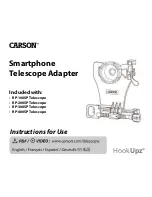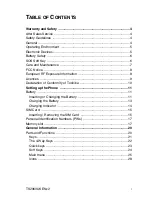
13
body) as required by the FCC for each
model.
The highest SAR value for this model
phone when tested for use at the ear is
0.56 W/kg and when worn on the body, as
described in this user guide, is 1.27
W/kg(body worn measurements differ
among phone models, depending upon
available accessories and FCC
requirements). While there may be
differences between SAR levels of various
phones and at various positions, they all
meet the government requirement for safe
exposure
The FCC has granted an Equipment
Authorization for this model phone with all
reported SAR levels evsaluated as in
compliance with the FCC RF emission
guidelines. SAR information on this model
phone is on file with the FCC and can be
found under the Display Grant section of
http://www. fcc.gov/oet/ea/fccid/ after
searching on FCC ID ZNFE960
For more information about SARs, see the
FCC’s OET Bulletins 56 and 65 at
http://www.fcc.gov/
Bureaus/Engineering_Technology/
Documents/bulletins or visit the Cellular
Telecommunications Industry Association
website at http://www.
ctia.org/consumer_info/index.cfm/
AID/10371. You may also wish to contact
the manufacturer of your phone.
Can I minimize my RF exposure?
If you are concerned about RF, there are
several simple steps you can take to
minimize your RF exposure. You can, of
course, reduce your talk time. You can
place more distance between your body
and the source of the RF, as the exposure
level drops off dramatically with distance.
The FDA/ FCC website states that “hands-
free kits can be used with wireless phones
for convenience and comfort. These
systems reduce the absorption of RF
energy in the head because the phone,
which is the source of the RF emissions,
will not be placed against the head. On the
other hand, if the phone is mounted
against the waist or other part of the body
during use, then that part of the body will
absorb more RF energy. Wireless phones
marketed in the U.S. are required to meet
safety requirements














































